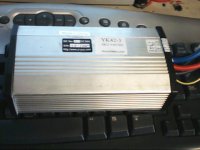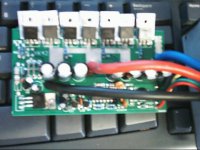lazarus2405
10 kW
fechter said:The "pot box" setup with a switch would work.
Are you using that in a broad sense, where the "pot box" in this case has no pot? Because as far as I can tell the YKxx line won't take pot throttles. Would a linear hall effect sensor work, and can they be bought in the way I'd want to use it? Or would I need to make my own with a Hall sensor and magnets?
The way I'm thinking of wiring it on my scooter...
You mean this one? http://www.evalbum.com/803
-- Does the most recent circuit have any provision to adjust the charge rate so the pack will receive the optimal current for charging and longevity?
Yup! The idea is to used a brushed motor controller to control the regen, to use its throttle to adjust the braking force, and to use its current limit to protect the batteries. That way, turning the regen controller's throttle will increase the current going to the batts until it reaches the current limit, which would have to be manually set for each battery.
The idea I'm liking is to use the regen 80% of the time for braking, and the resistor coil either when the batts are at a full charge or when the stopping power needed would generate more current than the batts could handle. Also, redundant brakes are really underrated.
Also... when I build my regen brake, should I use this thread, or make a brand new build thread for it? I mean, this one has a lot of information, but it forces one to dig to the 5th page to find the most recent circuit.




